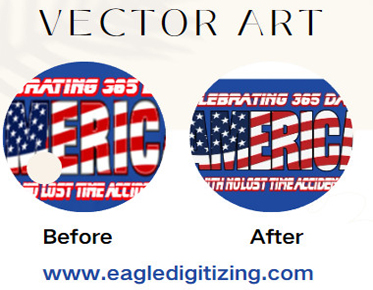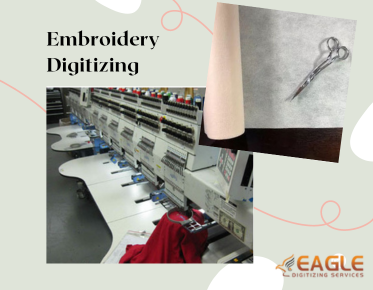How to get the best vector conversion services?
Vector graphics are a crucial asset in digital design, offering scalability and clarity unmatched by raster images. Understanding vector conversion services can significantly enhance your ability to utilize these benefits effectively.
Vector conversion services refer to the process of transforming raster images into vector graphics. This conversion is essential for maintaining sharpness and scalability, especially in applications requiring resizing without loss of quality.
High-quality vector graphics are vital for professional design projects across industries such as advertising, printing, and web development. They ensure that logos, icons, and illustrations appear crisp and clear, whether on a business card or a billboard.
Understanding Vector Conversion
Vector graphics are composed of mathematically defined paths rather than pixels, allowing them to be scaled infinitely without losing quality. This scalability makes them ideal for logos, icons, and illustrations across various industries, including advertising, publishing, and web design.
Vector conversion is necessary when you have raster images (composed of pixels) that need to be transformed into scalable vector formats. This process involves tracing the outlines of the raster image and converting them into paths and shapes that can be edited and resized without loss of quality.
Applications of vector graphics span multiple industries due to their scalability and clarity. They are indispensable in logo design, where resizing is frequent, and in industries requiring high-quality prints like textiles, where precision is paramount.
Factors to Consider When Choosing Vector Conversion Services
When selecting a vector conversion service, several factors must be considered to ensure quality and efficiency:
● Quality of conversions: Assess the provider's ability to accurately convert raster images into vector formats without losing detail or introducing errors.
● Turnaround time and delivery options: Evaluate how quickly conversions are completed and the options available for receiving the final vector files.
● Pricing models and transparency: Understand the pricing structure, including any hidden fees, and ensure transparency in billing practices.
● Customer reviews and testimonials: Review feedback from previous clients to gauge satisfaction levels and the provider's reliability.
● Expertise in handling different file formats: Confirm the provider can work with various file types commonly used in design, ensuring compatibility and versatility.
Types of Vector Conversion Services
Vector conversion services typically fall into three categories:
● Manual tracing and conversion: Skilled designers manually trace raster images to create precise vector graphics, ensuring high-quality results suitable for detailed artwork and logos.
● Automated vectorization techniques: Utilizing software to convert raster images into vector formats quickly, although this method may require manual adjustments for complex images.
● Hybrid methods combining manual and automated processes: Combining the precision of manual tracing with the efficiency of automated tools to achieve accurate and timely conversions.
Key Features to Look for in Vector Conversion Providers
When choosing a vector conversion provider, prioritize the following features to ensure your project's success:
● Scalability for large projects: Ability to handle high volumes of conversions efficiently without compromising quality.
● Compatibility with various design software: Proficiency in exporting vector files compatible with popular design programs like Adobe Illustrator and CorelDRAW.
● Customization options and flexibility: Capability to accommodate specific design preferences and requirements, such as color adjustments and format specifications.
● Quality assurance and error handling: Processes in place to ensure accurate conversions and mechanisms for addressing any errors or discrepancies.
● Security and confidentiality measures: Commitment to safeguarding client data and ensuring confidentiality throughout the conversion process.
Choosing Between Online Services vs. Freelancers vs. Agencies
Each option—online services, freelancers, and agencies—has its benefits and considerations:
● Online services: Often cost-effective and accessible, suitable for straightforward projects with clear requirements.
● Freelancers: Offer flexibility and personalized attention, ideal for small to medium-sized projects requiring specialized expertise.
● Agencies: Provide comprehensive services, including project management and quality assurance, suitable for large-scale or complex projects.
Steps to Ensure Accurate Vector Conversions
Achieving precise vector artwork conversions requires a systematic approach to preparation, communication, and validation:
Preparing your raster images for conversion: Before submitting images for conversion, it is essential to ensure they are of high quality and resolution. Clear, well-defined images provide a solid foundation for accurate tracing and conversion processes. High-resolution images capture intricate details and textures, which are crucial for maintaining the fidelity of the final vector output. By preparing your raster images meticulously, you set the stage for a smoother conversion process that minimizes the need for extensive manual corrections.
Communicating your requirements effectively: Effective communication is key to ensuring that the converted vector graphics align with your creative vision and project requirements. Clearly articulate your expectations and preferences to the service provider, detailing aspects such as color schemes, gradients, and any specific design elements essential to your project. Providing comprehensive instructions helps the provider understand the nuances of your design intent, ensuring that the converted vector files meet your standards for quality and accuracy.
Reviewing sample conversions before proceeding: Before proceeding with the full conversion process, it is prudent to request and evaluate sample conversions from the service provider. This step allows you to assess their capabilities and the quality of their work firsthand. Reviewing sample conversions enables you to gauge how well the provider handles complexities such as intricate details, color accuracy, and overall fidelity to the original image. It also provides an opportunity to identify any potential issues early on and communicate necessary adjustments or refinements to ensure the final deliverables meet your expectations.
By following these steps diligently, you can significantly enhance the likelihood of achieving accurate and high-quality vector conversions. This proactive approach not only streamlines the conversion process but also ensures that your design projects benefit from vector graphics that are visually compelling and functionally robust across different media and applications.
Common Challenges in Vector Conversion and How to Overcome Them
Challenges in vector conversion include:
Dealing with complex images and textures: Address by utilizing advanced tracing techniques and manual adjustments for intricate details.
Addressing color accuracy and gradients: Achieve by calibrating color settings and manually adjusting gradients to maintain visual fidelity.
Handling file size and compatibility issues: Resolve by optimizing vector files for size without compromising quality and ensuring compatibility with target applications.
Future Trends in Vector Conversion Technology
Emerging trends in vector conversion technology indicate exciting advancements that are poised to revolutionize the industry:
Advancements in artificial intelligence and machine learning: These technologies are transforming vector conversion processes by automating complex tasks. AI and machine learning algorithms can now analyze raster images more accurately, identify shapes, and convert them into vector formats with unprecedented speed and precision. This automation not only accelerates the conversion process but also reduces the margin for human error, ensuring consistently high-quality results across diverse image types and complexities.
Impact of augmented reality and virtual reality on vector graphics: As augmented reality (AR) and virtual reality (VR) continue to gain traction across industries, vector graphics are playing a pivotal role in enhancing visual communication within these immersive environments. Vector graphics, known for their scalability and clarity, are ideal for creating detailed and responsive visuals that can be seamlessly integrated into AR and VR experiences. Whether used in interactive product demos, architectural visualizations, or virtual training simulations, vector graphics ensure that users experience crisp and realistic visuals that enhance engagement and understanding.
These trends signify a shift towards more efficient, adaptable, and visually impactful vector conversion technologies. By leveraging AI-driven automation and integrating vector graphics into emerging AR and VR applications, businesses and designers can stay at the forefront of digital innovation, delivering compelling visual experiences that resonate with modern audiences.
Conclusion
In conclusion, choosing the optimal vector conversion service necessitates a thoughtful evaluation of several critical factors that directly impact the outcome of your design projects. Quality stands as the foremost consideration, ensuring that the converted vector graphics retain fidelity and clarity from their original raster counterparts. This ensures your designs maintain their integrity across various applications, whether for print, web, or multimedia.
Turnaround time also plays a crucial role, especially for time-sensitive projects. Selecting a service provider capable of delivering conversions promptly without compromising quality ensures that your deadlines are met efficiently. Expertise in handling different file formats and design requirements further enhances the provider's ability to cater to diverse project needs, accommodating specific nuances and preferences seamlessly.
To navigate this selection process effectively, consider these final tips:
1. Prioritize quality and accuracy over cost: While cost is a factor, compromising on quality to save on expenses can diminish the effectiveness of your visual assets. Investing in a service that prioritizes precision ensures that your vector conversions are not only visually appealing but also functionally reliable across different platforms.
2. Communicate effectively: Clear and concise communication is essential to convey your design preferences and expectations accurately. Providing detailed briefs, including specific instructions on color schemes, gradients, and intended use, helps align the service provider's output with your creative vision.
3. Review samples and client testimonials: Before committing to a service provider, examine their portfolio of past work and client testimonials. This review offers insights into their track record for delivering satisfactory results. Assessing their reputation for reliability and customer satisfaction ensures confidence in their ability to meet your project's requirements.
By adhering to these guidelines and leveraging the expertise of a reputable vector art conversion service, you can ensure that your design projects benefit from accurate, high-quality vector graphics that elevate visual impact and reinforce brand identity effectively.



